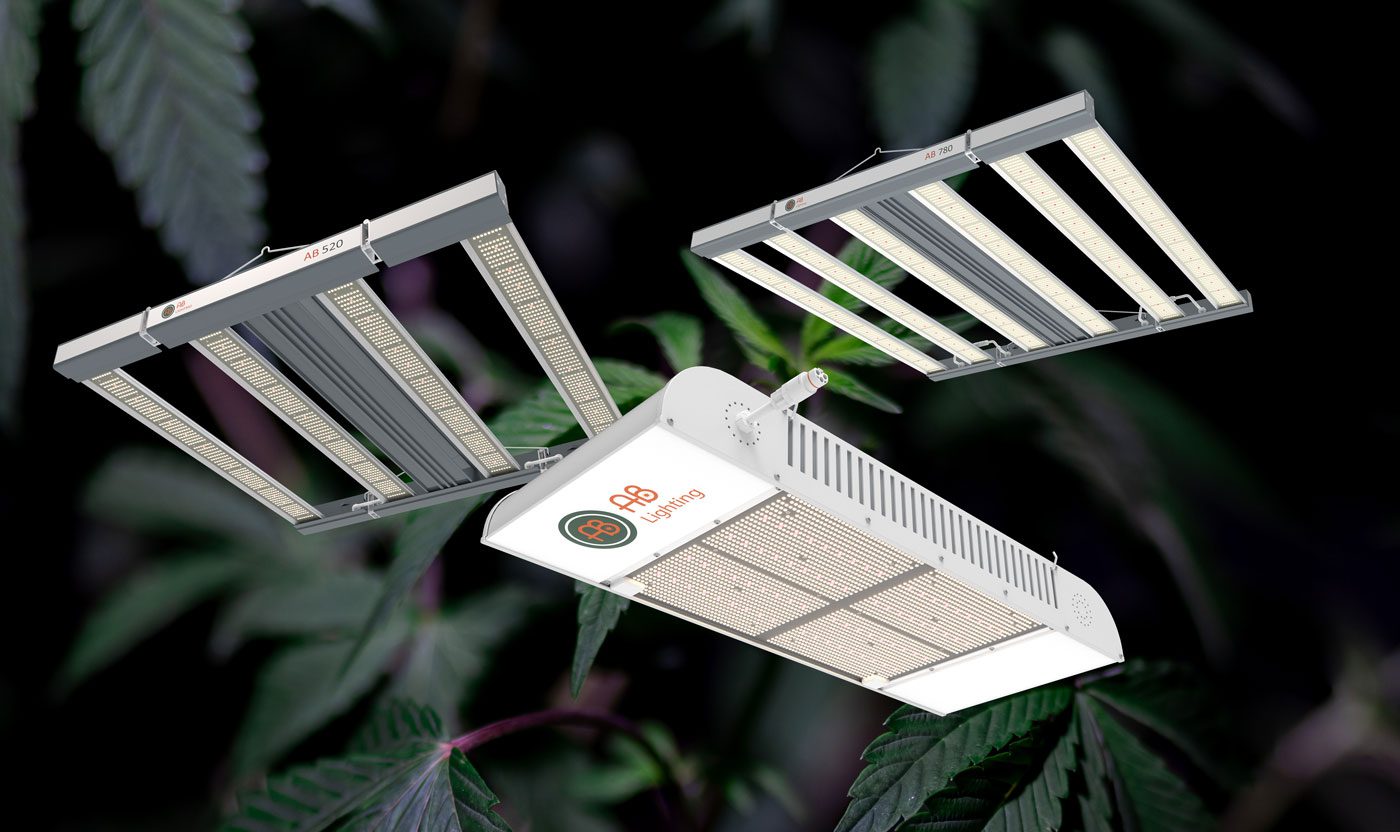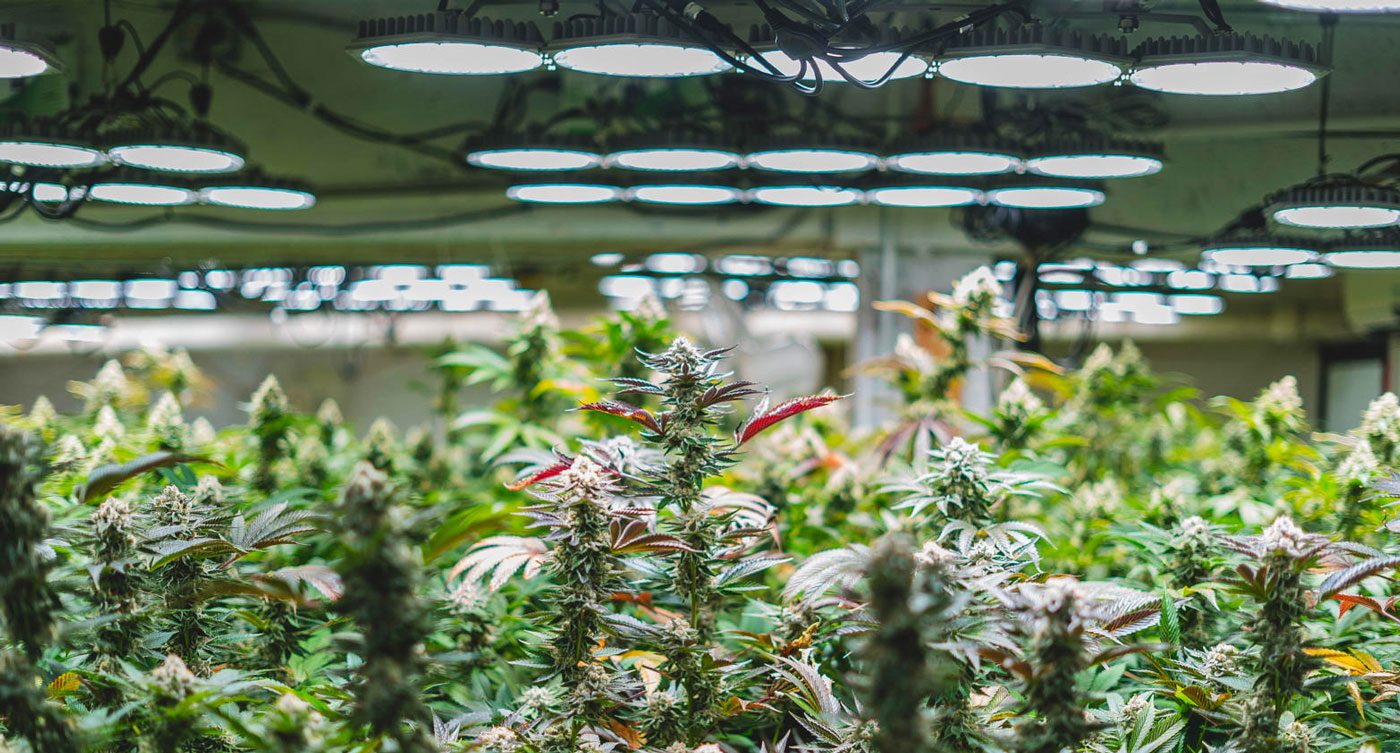Lights for commercial cannabis growers are a big investment. And there’s a large range in quality and options to choose from, depending on the size of the grow room and the amount of cannabis being grown. When buying commercial lighting for the first time, it makes sense to buy LEDs because of the long life and energy savings. And many established growers are switching to LED lights from HPS lighting solutions.
It pays to work with a lighting partner that can make sure you are getting the maximum rebate possible from utility companies when making the switch to LED commercial lighting or buying LEDs for the first time. We spoke with Mark Honeycutt, a 20-year veteran of the lighting industry and CEO of AB Lighting, a U.S.-based premier LED grow light provider with a focus on the cannabis industry, to get his tips. Honeycutt says growers can get a rebate of up to 25% by having their grow light partners coordinate with utility companies.

How To Choose Lighting
There are a lot of factors that go into the decision on which lighting to purchase for a large-scale grow. Whether you’re growing vegetables or cannabis, there are more choices than ever for lighting. This is partially because the industry is expanding, which means that companies that previously weren’t in the cannabis space are now jumping in and offering products and solutions.
Do your due diligence
“Typically the lighting is one of the more expensive investments that a grower will make, so I think they’ve just got to do their due diligence,” Honeycutt says. “They might not become experts in lighting but they have to at least try to educate themselves about lighting and the lighting industry for growing and understand who the players are, and understand some of the specifications and what they mean.”
Validate the specs
Honeycutt says to validate specs by asking for specific information from the manufacturers. Work with companies who quickly provide their specs and third-party testing reports that validate the specs they claim. “Not everybody does that,” he says. “Don’t just take their word. They should be able to say, ‘here’s a professional lab that tested our grow lights and here’s a very comprehensive report that was done by them.'”
Seek out a warranty
Even the most high-quality products, and probably especially the highest-quality products, should offer a warranty. A high-quality product should trust their products enough to offer a warranty that assures the product performs as expected for an extended period of time. AB Lighting, for instance, offers a five-year free replacement warranty.
Honeycutt says what he sees most often is that shortcut companies use cheaper components which just don’t last as long. “They might not be using the best LED chips or the best drivers in order to hit lower price points. Even some of the branded lighting manufacturers will, in an effort to try and be more competitive, make changes to their products and actually break their products, because they made bad choices.”
Check references
“Make sure you check the references from other customers who bought the product that you are considering because I will tell you there is a lot of buyer’s remorse in grow lights,” Honeycutt says. “Customers have had issues and have not had good warranty protection. Some have had to pursue legal ways to get reimbursed, and so forth.”
Check the IP code for moisture
Check the IP code for moisture for any product you’re considering. The IP code stands for
ingress protection and it is the rating used to classify how effective the seal is on the enclosure of an electrical item, which is sealed against dust and moisture. The first number in the code is for solids like dust, sand, or dirt particles. The second digit indicates the level of protection from water or moisture. These numbers range from 0, which offers no protection against ingress of water, to 9K, which offers protection from close-range high pressure, high-temperature spray downs.
“It’s important to check these ratings because in a greenhouse environment there is a lot of humidity, and you’re washing the rooms down, and so forth,” Honeycutt says. “Moisture is a killer in lighting.”
Check out heat management
Lights that don’t have a good heat dissipation system are more likely to break down. Heat sinks or fans help keep the system from overheating. These features also reduce harm to the crop canopies.

Get The Rebates
AB Lighting works with Green Rebates, a third party whose business is to get rebates for customers. “They are experts in processing and managing rebates in the various states and different utilities around the country,” Honeycutt says.
It pays to work with an agent with an expertise in rebates because they vary dramatically by state and by utility. This company takes a fee of 10% of the rebate amount. In most cases for large-scale purchases, the rebate more than makes up for the fee. Some companies, like Green Rebates, can also help with HVAC rebates and any other purchases that qualify for rebates.
“They’ll actually help you get all the rebates for our products and others if you use their service,” he says. “And they don’t get paid til the very end, so you don’t have any money out of pocket and they will maximize your rebate.”
Seek out DLC certification
Honeycutt stresses that all products that qualify for rebates have to be DLC certified. The DesignLights Consortium (DLC) is a non-profit organization that has developed product quality specifications to improve energy-saving and ensure high-quality lighting solutions. Unlike Energy Star for general appliances, DLC is specific to the lighting industry. Achieving DLC qualification means that a company submitted a paid application and participated in extensive third-party testing on the product to prove that the product performs as the manufacturer claims it will.
The DLC qualifies commercial LED luminaires, retrofit kits, and linear replacement lamps. The organization works with utility companies in the U.S. and in Canada, to include DLC-certified products in lighting rebate and incentive programs. Most utility companies require fixtures to be DLC rated in order to qualify for rebates. Shoppers can go to the DLC website to find manufacturer and model numbers for approved products.
Honeycutt says he is excited about the enormous growth in the cannabis industry that is happening right now. Because the industry is growing and companies are trying to set themselves apart from others, there is more R&D happening now than ever, which helps to prove quality. “The companies are the benefactors and the growers are benefitting,” he says. “All that research is helping to make better greenhouses, better lighting, and better tools overall for our food agriculture system and for cannabis.”
The research is there, but often that means the grower has to seek it out and check out all these factors to make a good buying choice. “They almost have to become a student of the business, or someone that works for them needs to really understand lighting, in order to make a good choice,” Honeycutt says. “I can tell you, there’s a lot of sad stories where customers have bought lights thinking they got a really good quality light and one or two years later the lights are failing and there’s no one to help them out. Unfortunately, it does happen a lot.”

